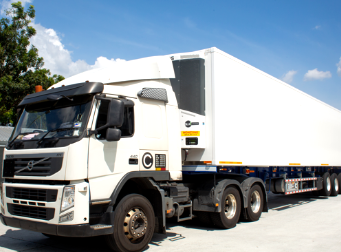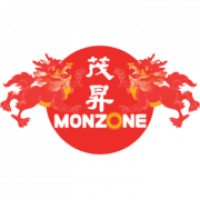How to Choose the Best Cold Chain Transportation Service in Singapore?

Strong 8k brings an ultra-HD IPTV experience to your living room and your pocket.
Singapore’s tropical climate demands precision when moving temperature-sensitive goods. From fresh produce to vaccines, fragile items need more than just a van—they need controlled logistics. That’s where cold chain transportation enters the picture. This system preserves product integrity through carefully managed cooling at every step.
But how do you choose the right service? With so many providers, features, and standards, the task can feel overwhelming. This guide breaks it down into simple steps. Whether you’re a food supplier, pharmacist, or warehouse operator, you’ll gain clarity on what truly matters in a cold chain partner.
What Is Cold Chain Transportation?
Cold chain transportation is a logistics process that keeps goods at a fixed temperature during transit. It involves special vehicles, monitoring tools, and storage methods designed for perishable or temperature-sensitive products.
In Singapore, industries like healthcare, food, and chemicals rely on these services every day. One small error in temperature can spoil a shipment and cause major loss. That’s why choosing the right provider isn't just helpful—it’s essential.
Why Choosing the Right Provider Matters?
The wrong choice doesn’t just affect the product. It also impacts your reputation, profit, and customer trust. For example, imagine delivering melted ice cream or spoiled medicine. One mistake like this could break client relationships or even bring legal trouble.
A trusted cold chain partner prevents those outcomes. They preserve safety, quality, and peace of mind throughout the process. Let’s explore how to make the best choice.
Know Your Needs First
Before you search for a service, define your needs. You can't evaluate a solution without understanding your operation.
Ask Yourself:
- What products do you ship?
- What temperature range must they stay within?
- How often do you ship?
- Where are your pickup and delivery points?
- Do you need storage before or after delivery?
Knowing these answers sets the foundation for choosing the best cold chain transportation service.
Key Factors to Consider
Choosing a cold chain service is about more than cold trucks. It involves coordination, safety, and attention to detail. Below are the critical aspects to check.
1. Temperature Control and Monitoring
This sits at the core of cold chain success. Make sure your provider uses accurate tools to measure and control the climate inside their vehicles.
Look for:
- Multi-zone temperature systems
- Real-time monitoring
- Alert systems for any deviations
A service that doesn’t offer live temperature tracking may not meet the modern reliability standard.
2. Vehicle Condition and Technology
Old or poorly maintained vehicles may cause temperature fluctuations. Look for fleets that stay clean, modern, and regularly serviced.
Important features include:
- Built-in data loggers
- Backup cooling systems
- Temperature-proof insulation
These features ensure cargo stays safe, even during unexpected delays.
3. Handling Practices
Trained handlers make a big difference. Even the best system fails if staff mishandle boxes during loading or forget to close refrigerated doors.
Verify if:
- Drivers and staff receive training
- Protocols exist for emergency handling
- Proper tools like pallet jacks and gloves are used
Cold Chain Elements and Why They Matter
Before diving deeper, here’s a table to summarise each element’s role in a cold chain system. This helps clarify why no part can be skipped or rushed.
Cold Chain Element Role in Transportation What to Look For
Refrigerated Vehicles Maintain a steady cold during transit Clean, well-sealed trucks with logs
Temperature Monitoring Track product climate in real time Mobile alerts, dashboard access
Trained Staff Proper loading, unloading, and safety Certified handling, awareness training
Standard Operating Procedures (SOPs) Set clear steps for every stage Custom SOPs based on goods
Backup Plans Minimise loss during breakdowns Contingency transport and spares
Each link in the chain must hold firm. One weak spot—like poor staff training—can compromise the whole shipment.
Understand Regulatory Requirements
Singapore holds strict regulations on cold chain logistics, especially in food and pharmaceutical transport. Providers must meet these standards to operate legally.
Key areas include:
- Food Safety Management (SS 590 and HACCP standards)
- Good Distribution Practice (GDP) for medicine
- Documentation for inspections
Your provider should show awareness and compliance without hesitation. They should also provide records when needed.
Check for Transparent Communication
Clear communication separates good providers from unreliable ones. During delivery, clients need to know where the shipment is, how it’s faring, and if delays arise.
Make sure your provider offers:
- Status updates through email or an app
- Quick customer service responses
- Access to past shipment records
If a service dodges questions or delays replies, that’s a red flag.
Evaluate Their Experience with Your Product Type
Some companies focus on food. Others deal with vaccines or flowers. Choosing a provider with experience in your industry helps avoid common pitfalls.
Ask about:
- Types of products they usually transport
- Issues they’ve handled
- Adjustments they made for special cargo
An experienced partner thinks ahead. They know how to handle spoilage risk, customs delays, and weather-related reroutes.
Review Their Service Network
Singapore acts as a logistics hub for Southeast Asia. Your cargo might pass through ports, border checks, or airports. Choose a service with a wide, dependable reach.
Evaluate their:
- Routes and transit options
- Storage points or warehousing options
- Local driver network knowledge
This ensures smoother handovers and fewer interruptions.
Compare Safety Records and Reliability
Always ask about past incidents. No company operates perfectly, but a pattern of lost or damaged goods should concern you.
Things to look into:
- How often do delays happen
- Protocols for mishandling
- Insurance options offered
You want a provider that reports openly, handles issues quickly, and works to prevent repeats.
Understand Their Commitment to Sustainability
Today’s businesses think green. Cold chain transport, by nature, consumes energy. Still, some providers make real efforts to reduce waste.
You can check:
- Fuel efficiency in vehicles
- Use of biodegradable packaging
- Efforts to reduce emissions
Responsible logistics protects both your product and the environment.
Watch for Red Flags
Not every provider meets industry standards. Warning signs help you avoid costly mistakes.
Avoid services that:
- Offer vague answers about tracking
- Lack of clear protocols
- Have inconsistent delivery times
- Use visibly worn-out vehicles
- Avoid audits or documentation
Ask the Right Questions Before Signing
Before finalising a provider, prepare a list of questions. This ensures you don’t miss any blind spots during discussions.
Suggested Questions:
- What temperature ranges do your vehicles support?
- How do you manage route delays or mechanical failures?
- Can I see real-time tracking for my shipment?
- Do your drivers have training in product handling?
- What happens if the shipment arrives spoiled?
Answers should come with confidence, not guesswork.
Mistakes to Avoid When Choosing a Service
Many first-time clients make these errors:
- Choosing based only on speed
- Ignoring the condition of transport equipment
- Overlooking staff quality
- Failing to request trial runs
- Forgetting to define specific temperature needs
Avoid these traps to make a solid, informed choice.
Conclusion
Choosing the right cold chain transportation service in Singapore takes effort, but the reward is peace of mind. When your provider understands your product, protects its temperature, and communicates well, you avoid costly losses and build client trust.
Think beyond cold trucks. Consider training, tools, routes, and responsiveness. Look at their track record. Choose someone who treats your goods like their own. In a warm country like Singapore, cold transport done right means everything.
Start with a clear list of your needs. Ask thoughtful questions. Trust your eyes, not just promises. In the end, the best partner keeps your goods safe—and your brand stronger.
FAQ’s
1. What is cold chain transportation?
Cold chain transportation is the process of moving goods that must stay at certain temperatures, like food, medicine, and chemicals. This process keeps these products safe and effective during their journey.
2. Why is cold chain transportation important?
Cold chain transportation is crucial for preserving the quality and safety of products that require specific temperature conditions, such as vaccines, fresh food, and biological samples. Without proper temperature control, these products can spoil, become ineffective, or pose health risks.
5. How can I track the temperature of my goods during transportation?
Many cold chain transport services in Singapore offer real-time temperature monitoring using sensors and GPS. Customers can access this data via online portals or mobile apps.
Note: IndiBlogHub features both user-submitted and editorial content. We do not verify third-party contributions. Read our Disclaimer and Privacy Policyfor details.


